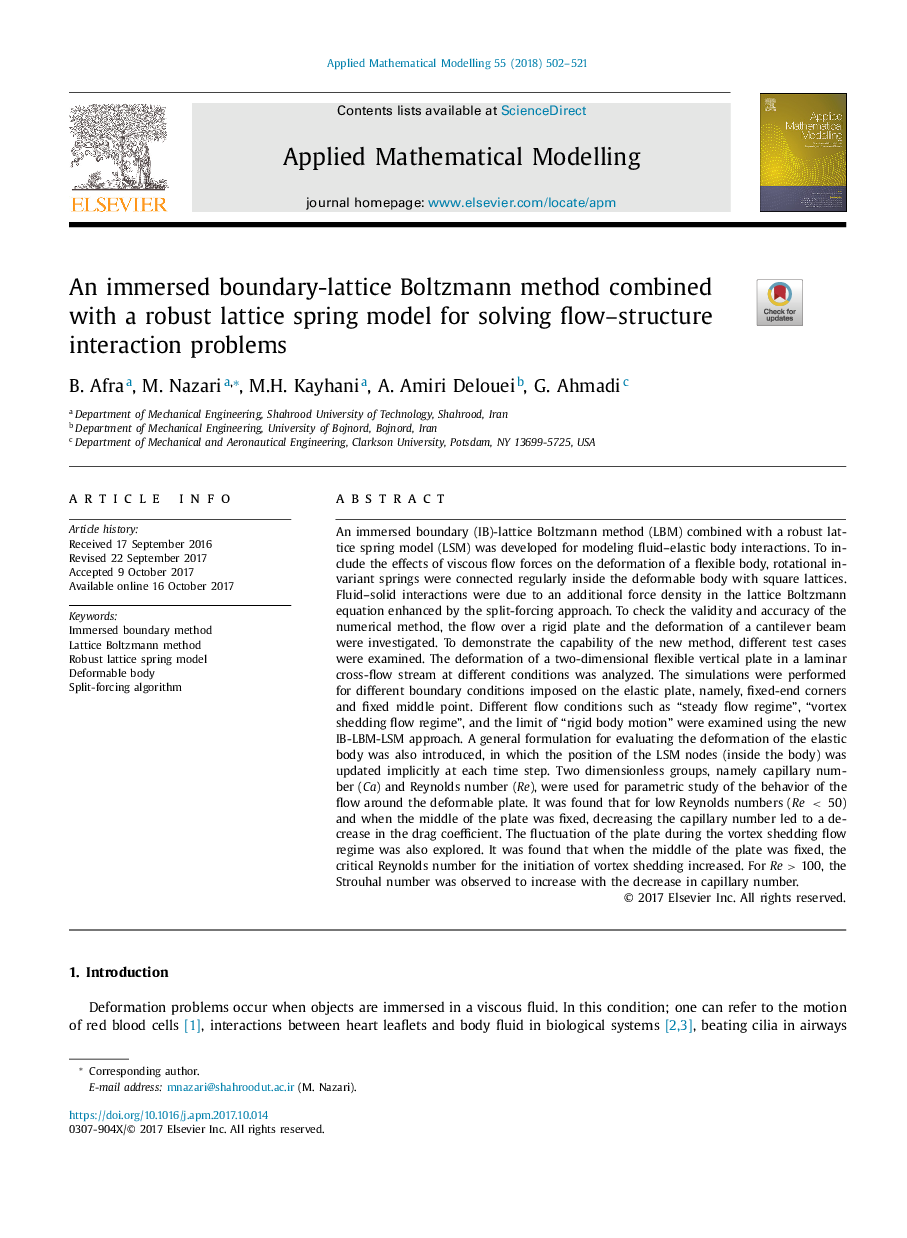| کد مقاله | کد نشریه | سال انتشار | مقاله انگلیسی | نسخه تمام متن |
|---|---|---|---|---|
| 8052020 | 1519378 | 2018 | 20 صفحه PDF | دانلود رایگان |
عنوان انگلیسی مقاله ISI
An immersed boundary-lattice Boltzmann method combined with a robust lattice spring model for solving flow-structure interaction problems
ترجمه فارسی عنوان
یک روش مرزی غوطه ور بولتزمن در ترکیب با یک مدل فنر بافتی قوی برای حل مشکلات متقابل ساختار جریان
دانلود مقاله + سفارش ترجمه
دانلود مقاله ISI انگلیسی
رایگان برای ایرانیان
کلمات کلیدی
موضوعات مرتبط
مهندسی و علوم پایه
سایر رشته های مهندسی
مکانیک محاسباتی
چکیده انگلیسی
An immersed boundary (IB)-lattice Boltzmann method (LBM) combined with a robust lattice spring model (LSM) was developed for modeling fluid-elastic body interactions. To include the effects of viscous flow forces on the deformation of a flexible body, rotational invariant springs were connected regularly inside the deformable body with square lattices. Fluid-solid interactions were due to an additional force density in the lattice Boltzmann equation enhanced by the split-forcing approach. To check the validity and accuracy of the numerical method, the flow over a rigid plate and the deformation of a cantilever beam were investigated. To demonstrate the capability of the new method, different test cases were examined. The deformation of a two-dimensional flexible vertical plate in a laminar cross-flow stream at different conditions was analyzed. The simulations were performed for different boundary conditions imposed on the elastic plate, namely, fixed-end corners and fixed middle point. Different flow conditions such as “steady flow regime”, “vortex shedding flow regime”, and the limit of “rigid body motion” were examined using the new IB-LBM-LSM approach. A general formulation for evaluating the deformation of the elastic body was also introduced, in which the position of the LSM nodes (inside the body) was updated implicitly at each time step. Two dimensionless groups, namely capillary number (Ca) and Reynolds number (Re), were used for parametric study of the behavior of the flow around the deformable plate. It was found that for low Reynolds numbers (Reâ
< â
50) and when the middle of the plate was fixed, decreasing the capillary number led to a decrease in the drag coefficient. The fluctuation of the plate during the vortex shedding flow regime was also explored. It was found that when the middle of the plate was fixed, the critical Reynolds number for the initiation of vortex shedding increased. For Re > 100, the Strouhal number was observed to increase with the decrease in capillary number.
ناشر
Database: Elsevier - ScienceDirect (ساینس دایرکت)
Journal: Applied Mathematical Modelling - Volume 55, March 2018, Pages 502-521
Journal: Applied Mathematical Modelling - Volume 55, March 2018, Pages 502-521
نویسندگان
B. Afra, M. Nazari, M.H. Kayhani, A. Amiri Delouei, G. Ahmadi,
